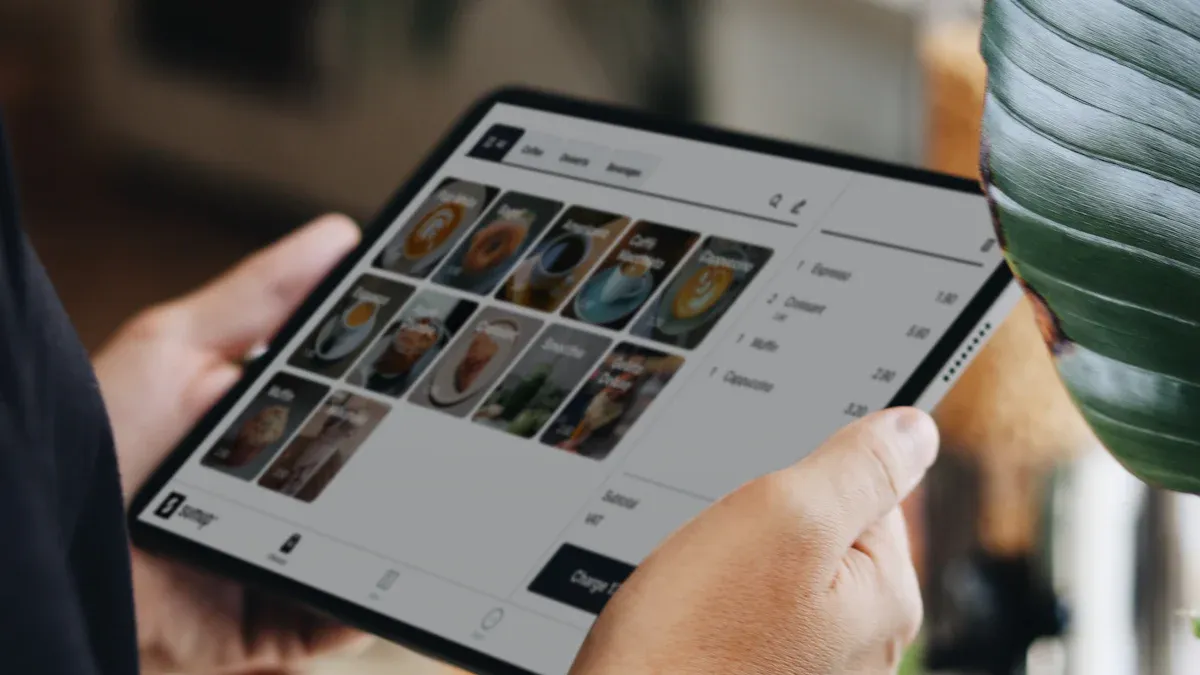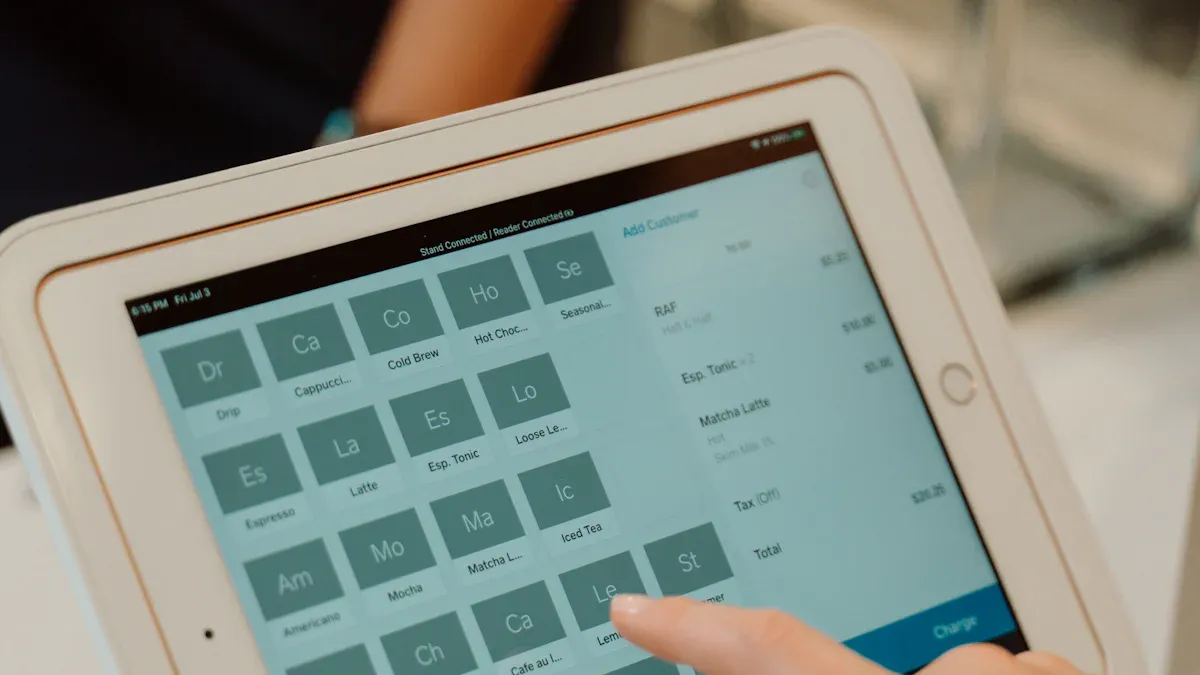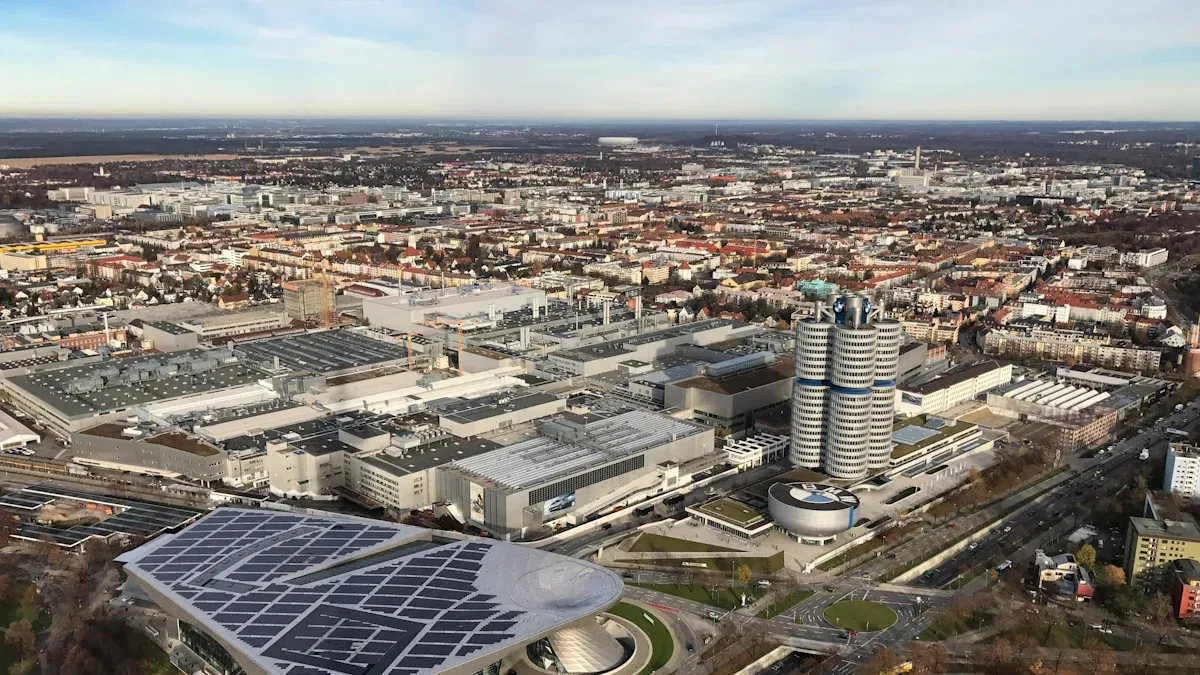The shift to renewable energy in intelligent retail spaces

You can see stores changing quickly as artificial intelligence and sustainability work together. Saving energy is more important now because stores use more technology every day. Many stores now pick renewable energy for a few reasons:
Green energy plans grow fast because shoppers care more about the environment.
Stores are moving toward using only renewable electricity and carbon offset programs.
Lower costs and new government rewards make it easier to switch.
Key Takeaways
Retailers use renewable energy to meet what customers want. Many people want stores to be eco-friendly. This helps stores get more customers who care about the planet.
Using renewable energy can lower energy bills over time. Many stores save money after 5 to 7 years with solar panels.
AI tools help stores watch how much energy they use. These tools find where energy is wasted. This helps stores manage energy better and save money.
Government rules and rewards help stores use renewable energy. These programs make it easier and cheaper for stores to go green.
Customers like shopping at stores that care about the planet. When stores use renewable energy, shoppers trust them more. This helps stores keep loyal customers who care about the environment.
Why retailers choose renewable energy
Sustainability drivers
Many stores want to help the earth. They know your choices matter. When you shop, you think about the environment. Most shoppers buy more eco-friendly things now. Stores want to match what you care about. So, they use renewable energy. This cuts down on pollution and saves nature. Social media and news talk about green choices a lot. Because of this, stores try harder to show they care for the planet.
The International Renewable Energy Agency (IRENA) says solar power is much cheaper now. Since 2010, the price dropped by 82%. Solar is now one of the cheapest ways to get new electricity.
Cost and regulation
Renewable energy helps stores save money over time. Solar panels and wind turbines give free power for years. Stores do not need as much expensive grid power. Sometimes, they sell extra energy back and earn money. Governments give rewards and help to stores. These programs make it easier to use clean energy. They also make it safer for stores to try new technology.
Government rules and rewards help stores pay less.
These rules help more stores use renewable energy.
Stores can grow faster and keep more money.
Consumer expectations
You want stores to care about the earth. Surveys say 68% of shoppers look for green choices. Many people want more facts to help them pick better. Over half of shoppers will change habits to help the planet. Most will pay more for brands that use renewable energy. When stores use clean energy, they build trust and get more customers like you.
Region/Country | Key Metrics Compared to Global North | |
|---|---|---|
Global South | Growing fast | More solar and wind than Global North |
Latin America | Leading growth | More solar and wind than China |
Sub-Saharan Africa | Big increase | Solar share is over twice the U.S. |
Southeast Asia | Growing quickly | Growth is like the Global North |
Tanzania | Tripled access | Went from 14% in 2011 to 46% in 2022 |
Pakistan | Widespread use | Almost every building has solar panels |
AI and energy use in retail

AI’s impact on consumption
Stores use more AI tools now. These tools help you find things and check prices. They also give you shopping advice. AI makes shopping easier for everyone. But AI needs more electricity to work. Smart cameras and sensors use extra power. Digital signs also need energy. AI systems run all day and night. This helps stores give fast answers. Stores must watch how much energy they use. They need to manage their energy better.
Data centers and demand
AI needs big data centers to work. These centers store your shopping data. They run AI models and keep things online. As AI grows, data centers use more energy. Experts think energy use will double by 2030. Power for data centers may triple from 2022 to 2030. By then, data centers could use 9% of US power. More than half will go to AI tools. These tools include chatbots and product search. Stores must find new ways to save energy. They should use more renewable energy.
Efficiency with digital advisors
AI-powered digital energy advisors help stores save energy. Tools like Ento watch how much energy stores use. They give tips to save more energy. These tools track energy use in real time. They find waste and problems fast. They use smart predictions to plan for the future. Here is what they do:
Aspect | Description |
|---|---|
Watches energy use all the time and gives quick feedback. | |
Consumption Pattern Analysis | Checks old data to find waste and trends. |
Predictive Analytics | Predicts future needs and helps stores plan. |
You get quick feedback about energy use.
You can find problems and fix them fast.
You help stores use less energy and save money.
Predictive analytics helps stores avoid equipment problems. It also stops downtime. This makes everything work better and more reliably.
Integrating renewable energy

Solar and storage solutions
More stores use solar panels and batteries every year. Solar panels go on roofs or parking lots. They turn sunlight into electricity for the store. Stores like Mercadona use solar panels for most of their power. Some stores add wind turbines if the area is good for it. Batteries help save extra energy for later use.
"Using renewable energy is smart for business," said Anjee Solanki, national director of Retail & Practice Groups at Colliers.
Amazon is a leader with solar-plus-storage projects. These projects use both solar panels and big batteries. Amazon built 10 solar projects with almost 1.5 gigawatts of battery storage. The Baldy Mesa and Bellefield projects are the biggest planned solar-plus-storage sites in the US. Solar panels power the store when it is sunny. At night or on cloudy days, batteries give the store energy. This setup keeps the store open even when there is no sun.
Solar-plus-storage gives you clean energy all day and night.
Batteries keep extra energy for times when solar is low.
You get steady power, even when many people need it.
AI and machine learning help run these systems. They guess how much energy you will need. They decide when to use solar or battery power. This makes the system work better and saves money.
Smart energy management
Smart energy management systems use AI to help save energy. These systems watch your power use and find ways to stop waste. They can control lights, heating, and cooling to fit your needs. LED lights use less power and make the store bright. Smart climate systems change the temperature based on weather and how many people are inside.
These systems can save a lot of energy. Here is a table that shows how much energy stores can save:
Retail Setting | Efficiency Gain |
|---|---|
Supermarket Chain | |
Boutique Store | 30% reduction in energy costs |
AI and machine learning make these systems smarter. They learn from your past energy use. They guess what you will need next. This helps you waste less and pay lower bills. You also help the earth by using less energy.
Grid and off-grid options
You can pick grid-connected or off-grid renewable energy systems. Grid-connected systems link your store to the main power grid. Off-grid systems work alone and use batteries to store energy. Each choice has its own costs and benefits.
System Type | Initial Investment Cost Driver | Payback Period (years) |
|---|---|---|
Off-grid | High (batteries/storage) | 9.1–23.5+ |
Grid-connected | Lower (no batteries) | Shorter |
Most stores pick grid-connected systems because they cost less at first. They also pay off faster. Off-grid systems are best for faraway places where you cannot use the main grid. In cities and suburbs, grid-connected or hybrid systems work better.
Many feel proud when their system gives them steady, self-made energy.
You help the planet when you use renewable energy. Stores that use these systems lower their carbon footprint. Big brands like H&M and Gap now use renewable energy to make their stores greener. This change helps cut pollution and meets the needs of eco-friendly shoppers.
Overcoming challenges
Infrastructure and investment
Switching to renewable energy in your store is hard. Many power grids are old and cannot handle new energy needs. You might have to spend a lot of money to upgrade your systems. Adding solar or wind power to the grid is not always easy. These energy sources do not make power all the time.
You must spend a lot to update your energy systems.
It is hard to add solar or wind because they do not work all day.
When you look at renewable energy projects and traditional energy systems, you see some big differences:
Factor | Renewable Energy Projects | Traditional Energy Systems |
|---|---|---|
Economies of Scale | Higher cost for each unit | Lower cost for each unit |
Technology Maturity | Newer technology | Older, proven technology |
Impact of Subsidies | Fewer subsidies | More government help |
Time Value of Money | High starting costs | Faster returns |
You might worry about paying a lot at first. Many small stores cannot get loans for green projects. Some groups now give advice and help you find better ways to pay. If you track your progress and match your energy goals with your business plan, you can stay on track and make good choices.
Supply and storage issues
Storing renewable energy is not simple. Most stores use lithium-ion batteries for short-term power. These batteries do not help if you need power for many days. Some old storage ways, like pumped hydro, only work in certain places. This makes it hard to store enough energy for everything you need.
Technology and supply chain
New technology helps fix supply chain problems. You can use Industry 4.0 tools and green supply chain management to work better. Recycling, reusing, and fixing old parts can lower imports and help the earth. Using IoT, data analytics, and blockchain gives you more control and information about your energy use. These tools help you make smart choices and keep your store running well.
Some people think renewable energy costs too much or does not always work. But solar and wind prices have dropped a lot since 2010. New technology lets you use renewable energy almost anywhere. Battery safety also gets better every year.
Future of retail and sustainability
Long-term benefits
If you pick renewable energy for your store, you get many rewards over time. You pay less for energy and avoid higher bills later. Most stores pay off solar panels in about 5 to 7 years. After that, you get free power for a long time. Solar panels can also make your store worth more money. You help the earth by making less pollution and fewer carbon emissions. This makes your brand look better and shows customers you care about the future.
Benefit | Description |
|---|---|
Cost Savings | You spend less on energy and get your money back in 5 to 7 years. |
Increased Property Values | Solar panels can make your store worth more. |
Protection Against Price Volatility | Solar energy keeps your costs steady, even if prices go up. |
You also follow new rules and do not get fined. Many stores see their energy bills drop by more than half in the first year. You save money on repairs because solar systems do not need much work.
🌱 Using renewable energy helps fight climate change and shows your customers you care about the earth.
Policy and collaboration
You do not have to do this alone. Many rules and partnerships help you use renewable energy. Local laws, like zoning and community solar, make it easier to start. National laws give you tax breaks and rewards for using clean energy. International agreements, like the Paris Agreement, help stores everywhere go green. These rules lower your risks and bring in more money. They also help create new jobs in your area.
Local and national rules help you switch to renewable energy.
International agreements help everyone work together for a cleaner world.
These steps make it safer and cheaper for you to use green energy.
Evolving consumer needs
Customers want more than just things to buy. They want stores that care about the earth. You can meet these needs by changing how you run your store. Many stores now use less packaging and let people bring their own containers. Some stores have take-back and repair programs to cut waste. You can also sell products made from recycled materials.
Trend | Description |
|---|---|
Evolving Sustainable Packaging | You use less single-use packaging and let customers bring their own containers. |
Growing Circular Economy | You offer take-back and repair programs to cut down on waste. |
Sustainable Product Sourcing | You choose products made from recycled materials to help the earth. |
You can track your progress with easy numbers. You measure how much energy you save, how much waste you recycle, and how much money you save. These actions help you build trust and keep your customers coming back.
There are lots of reasons to pick renewable energy in AI-powered stores. You can save money and follow new rules. You also help the earth. AI lets stores use less energy and work better. Experts think stores will get more efficient. Shopping will be nicer for customers. Communities will become stronger too. Here is what experts think will happen:
Impact Area | What You Can Expect |
|---|---|
Operational Efficiency | AI will help you use energy wisely and run stores better |
Personalization | More stores use AI for marketing tailored to you |
Sustainability | Most people want stores to help their communities |
Emission Reduction | Stores will cut pollution from buildings |
You are helping make stores smarter, greener, and better for everyone.
FAQ
How does renewable energy help your store save money?
You lower your energy bills when you use solar or wind power. After you pay for the system, you get free electricity for years. You also avoid big price jumps from the power company.
Can AI really make your store more energy efficient?
Yes! AI tools track your energy use and spot waste. You get tips to fix problems fast. Smart systems adjust lights and temperature to save power every day.
What happens if the sun does not shine or the wind does not blow?
Batteries store extra energy for cloudy or calm days. You can also stay connected to the main grid for backup power. This way, your store always has electricity.
Do customers care if you use renewable energy?
Many shoppers want stores to protect the earth. You build trust and attract more people when you use clean energy. Surveys show most customers prefer brands that care about the environment.
See Also
The Future of Retail Lies in AI-Driven Stores
Smart Technology Is Transforming Electronics Vending Machines Today
Smart Stores Represent The Future of Convenient Shopping
